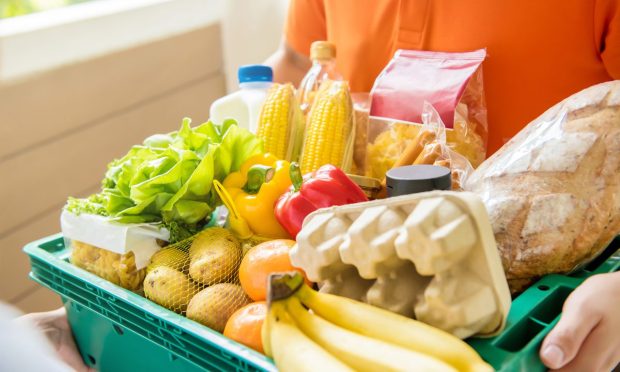To Make the Economics Work, Ultra-Fast Grocers Must Digitize Every Step of the Process

For the grocery industry, one of the most exciting spaces today is the rise of ultrafast grocery delivery. Around the world, new players are making their entries into the category, from newcomer startups to leading on-demand delivery companies.
Research from PYMNTS’ study What Consumers Expect From Their Grocery Shopping Experience, created in collaboration with ACI Worldwide, found that 23% of consumers are purchasing groceries online for home delivery, with 8% of grocery shoppers ranking this as their most preferred method.
You may also like: Digital Features Can Help Grocers Win Over 43 Percent Of Shoppers
Yet, while the value for today’s speed- and convenience-seeking consumers is clear — items brought to their home nearly as soon as they want them — the model can be a tricky one from an economic perspective.
“What we’re building is basically a new form of commerce,” Maxim Avtukhov, head of international markets at Yango Deli, the 15-minute grocery delivery arm of Russian tech giant Yandex, told PYMNTS in an interview. “In order to have positive unit economics and start earning money, you need to optimize many, many things, and you can do that only by heavily relying on tech. So for instance, we have a bunch of internal services devoted to solving complex logistics issues like dispatching, batching surge pricing, and so on … All that is possible because we’re building system from a digital perspective, first and foremost.”
The Pandemic Turning Point
Online grocery purchasing is on the rise, according to data from PYMNTS’ study The Bring-It-to-Me Economy: How Online Marketplaces And Aggregators Drive Omnichannel Commerce, created in collaboration with Carat from Fiserv, which surveyed more than 5,200 U.S. adults about how their habits have changed since the start of the pandemic. About one year in, 46% of consumers were already purchasing groceries online more often than before March 2020, with 27% buying online for home delivery “somewhat” or “much” more.
Read more: Bring-It-to-Me Economy Ascends as Consumers Embrace Home-Centric Lifestyles
Additionally, the What Consumers Expect study finds that the online grocery delivery channel is more popular than purchasing digitally for in-store or curbside pickup, though it lags well behind in-store shopping, which 82% of consumers rank as their go-to channel.
Many major companies in the space are operating from a reactive perspective, responding nearly two years later to changes in consumer behavior occasioned by the initial outbreak of the pandemic. This month alone, DoorDash debuted its ultra-fast delivery service, and news broke of Instacart’s reported intentions to enter the space.
See also: DoorDash Debuts Ultra-Fast Delivery Service in New York
Instacart’s Reported Entry Into Ultrafast Delivery Could Be Devastating to Newer Startups
For its part, Yango Deli has been able to benefit from having been active in the space since before the boom. Avtukhov explained, “We consider ourselves first early movers — we’ve been doing this long before the pandemic hit.”
Today, the service operates “across a dozen cities in Russia,” as well as in several Israeli cities, in London and in Paris.
Robots All the Way Down
The work that these services save the consumer must be borne by someone (or something), and the labor costs of the model can be prohibitive, especially now, as the hiring market for drivers becomes increasingly competitive.
“The real barrier for this business model to overtake offline retailers is basically that it’s quite labor intensive,” said Avtukhov. “You rely heavily on couriers. You rely heavily on store pickers and store managers.”
Yango Deli’s solution, looking ahead to the long-term future, is to automate every step of the way. Over the summer, Yandex partnered with U.S. delivery service Grubhub to launch a test of robotic deliveries at Ohio State University, and last month that partnership expanded to University of Arizona. Additionally, unlike many other trials of food delivery robots live today, these machines are fully autonomous, operating without a remote pilot.
Now, the tech company continues to develop its last-mile automation technology, while also looking to bring robotics to other parts of the order fulfillment process. Avtukhov explained, “We’re also developing internally robotic stores that would help us optimize operations within the store and eventually would make us more affordable for end customers.”
Related news: Grubhub, Yandex to Bring Robot Delivery to University of Arizona
What’s in Store
Over the next several years, Aktukhov expects adoption to grow by multiple orders of magnitude.
“Early adopters have already formed the first layers of those who are actually using [these services], but so far, even in London or other capitals, combined market share for all players is significantly below 1% of what the market can be in four years.”
As evidence, he highlighted the stickiness that can already be seen, with consumers who try ultra-fast delivery very likely to become repeat customers. As adoption grows, he echoes the predictions of many in the space, expecting that there will be widespread consolidation to only a handful of key players. Moreover, he expects that each service will specialize, finding its own place in the ultra-fast delivery category.
“[In five years], each market will be divided among three, maximum four, players … Each player would have to occupy a certain niche,” Avtukhov predicted. “Either it’s indulgence or a focus on fresh and local or a wider assortment and more affordable offering … It’s not like in the offline world, where you have many, many offline retail chains that can be simultaneous players in the market. This would be, I would say, a more consolidated segment.”
